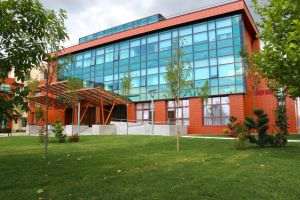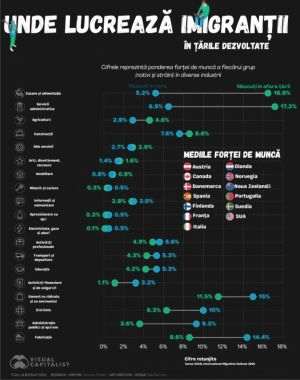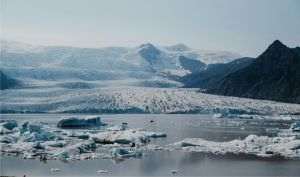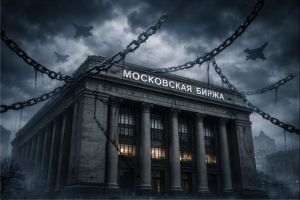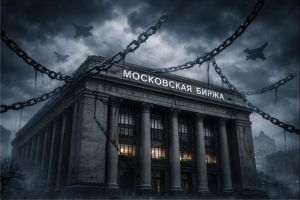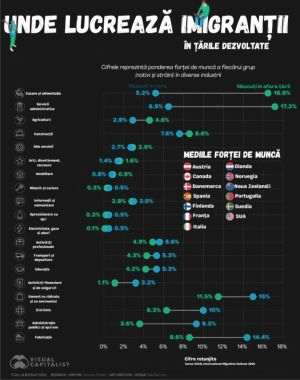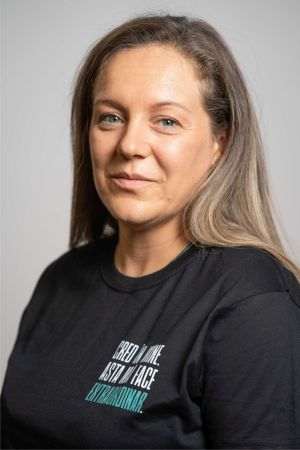Romania has an extraordinary energy potential in the Black Sea, whether it's wind energy, or natural gas, potential that has so far been very little exploited. Specialists that met on April 7, 2021 in a debate in the Parliament's Palace, warn Romania needs to first of all define the legislative framework for offshore investments. They said that investment projects in offshore wind farms generally take about a decade to complete and that the European Union's decarbonation strategy is, in fact, a great vision of industrial, economic and growth development and the chance of inserting Romania into the great economic game of the future.
Niculae Havrileţ, Secretary of State in the Ministry of Energy, said investments in maritime wind farms will be of extreme importance in terms of the energy independence of our region. "There a lot of discussions concerning this energy sector, and especially in the area of energy transition policies, when we are talking about important investments not only for Romania, but for the entire Southeast European area. Just like the extraction of natural gas in the Black Sea is an important investment for the entire southeastern part of Europe, the maritime wind farms will be of extremely high importance, both commercial, but in particular concerning the energy independence of this area. Member states in this area collaborate on the natural gas and electricity safety policies".
Havrileţ further said: "We encourage investments in the Black Sea (...). At this moment, the most important investor that can do that is Hidroelectrica, and it has included in its investment plans 300 million Euros for producing electricity using wind farms in the Black Sea. Also, just yesterday (April 7 ed. note), minister Virgil Popescu had a conference with the World Bank which expressed its willingness in helping Romania both when it comes to investments various funding mechanisms (...), as well as to supporting some important measures which Romania can take when it comes to acquiring the best practices in the field, through consulting programs backed by the World Bank".
Niculae Havrileţ: "Romania has the possibility to set up wind farms with a potential power of up to 72,000 MW"
The representative of the ministry also quoted a feasibility study, specifically drafted by the World Bank especially for the Black Sea area, according to which in the coastal waters area alone, Romania has the possibility of setting up wind farms with a potential power of up to 72,000 MW. For comparison, Romania has an average average consumption of about 8,000 - 10,000 MW electricity, Havrileţ said.
That energy could be exported or could be used, including for the manufacturing of hydrogen, the secretary of state further said.
According to the studies, Romania has the best continental shelf in the Black Sea for wind energy. Basically, Romania's continental shelf is very stable from a tectonic point of view, and allows the installation of the wind mills even at just five meters from the ground. The wind mills in the Black Sea already installed can produce electricity for 7-8 months a year, while in other regions the wind farms only produce energy for 5-6 months a year.
Niculae Havrileţ also said: "For that, it is necessary for Transelectrica to have the network prepared and to propose the development of that area in its near term development plans. We are also talking about the potential for the extraction of natural gas from the Black Sea, in conjunction with the potential of much of the wind electricity being transformed into hydrogen. There are huge possibilities to create an energy hub of major importance for the European Union. (...) With the production of hydrogen, the maritime as well as the Danube ports, may in turn reach see new investments and bring added value. There is huge potential for the possibility of project multiplication in the area. Invest, say, 1 billion euros, you get 1 billion euro from the World Bank. Invest in energy, in hydrogen, 5 billion, and you get another 5 billion, because hydrogen will be shipped mainly via maritime shipping routes, and ports can access other development support funds to be able to pick up and transport hydrogen to areas with major consumption.
We know that in the first phase hydrogen will be used in the maritime shipping and and in the heavy transport sector. We also talked to the World Bank. Minister Virgil Popescu called for the World Bank to help us with a common study for energy sources in the Black Sea area so that the Dobrogea area of the Black Sea becomes an integrated production hub of different energy sources.
He said that investors want long-term legislative predictability and stability, things that can be provided by the current structure of Parliament. Havrileţ noted that the investment in the NEPTUN Deep project alone is 6 billion euros, of which 2-3 billion euros are going towards production area.
"As we have mentioned in the talks with the World Bank, Romania is interested in mineral resources that help decarbonate Romania's energy sector, very important mineral resources, which Romania has and it is not out of the question that in the coming period we may have a program for developing the mining area dedicated to these very rare resources which Romania is rich in", Havrileţ concluded.
• George Vişan, Transelectrica: "The scheme for the contracts for difference is at an advanced stage of development"
George Vişan, head of the Transelectrica Energy Markets Division, said that one of the mechanisms for attracting investment and investors in the energy sector, the contract for difference, is in an "advanced" development phase.
"Financial support for wind production can be achieved through different support schemes. You need to know that a scheme for contracts for difference is under development. The scheme is at an advanced stage for nuclear energy and at a fairly advanced stage for wind energy. (...) All renewable energy should have a unified scheme applicable to all technologies, no matter where in Romania they are used", Vişan said.
But in the future we need to take into account and we are reviewing the evacuation of the offshore energy to the consumption areas through a continuous current system, like is already being produced in Germany - it is developed in Northern and Southern Germany alike. It would ensure the evacuation of the energy produced in the Black Sea safely and probably of the entire output. Given the high volume of funds that will be made available from European grants, we think that this is feasible. (...) As far as we are concerned, the evacuation of the energy in the Black Sea is a process we are considering, it is in the development stage, as I have noted earlier, and we think that only through cooperation with producers or investors interested in wind energy in the Black Sea can we find technical solutions to that all the interesting projects benefit from the wind potential".
The Transelectrica representative also said that construction is under way for new lines for evacuating the energy produced in Dobrogea to other consumer areas in Romania: "They are ongoing projects, not just on paper. But in the future it needs to be kept in mind and we are reviewing study for discharging offshore energy to consumer areas through DC system, as it is already in Germany - is developed in both northern and southern Germany. would ensure the evacuation of energy produced in the Black Sea certainly and probably the entire amount of energy produced. Given the high volume of funds that will be available from European funds, we believe it may be feasible. (...) As far as we are concerned, the evacuation of the Black Sea energy is a process on which we consider it, is in the development phase, as we have previously noted and we think that only through cooperation with producers or investors interested in the Black Sea wind energy can we find technical solutions that would allow all interesting projects to benefit from the wind potential".
• Radu Dudău, head of Energy Policy Group: "I expect a few GW which will be installed in the Romanian offshore sector, within a few perimeters that are truly attractive"
Radu Dudău, head of Energy Policy Group, said that the study indicates a potential of 94 GW, but the realistic expectation is for the installation of much less. "94 GW installed capacity is a theoretical figure that we have calculated through the entire Romanian territorial waters (....). But of course it is out of the question of the entire maritime surface ever being used for that purpose. Which reminds me that, on March 31st, Romania was supposed to send to Brussels what is called the National Maritime Planning Plan. We have a European directive that clearly says that all offshore economic activities must be integrated. (...) Personally, I predict a few GW to be installed in the Romanian offshore sector, in a few really attractive perimeters in terms of wind resources. And measurements in various perimeters are also necessary. All of that involves an effort from investors, but also the effort of the authorities".
He also said that the European Union's strategy, the decarbonation of the whole economy, which is subsumed to the Green Deal vision, is in fact a great vision of industrial, economic and growth development, and at the same time represents Romania's chance to enter the biggest economic game of the moment.
"The decarbonation plans - everything you are seeing in the industry, in the energy sector, in transportation, in construction - is based on transitions and creating energy vectors based on renewable energy sources. Green hydrogen. Sure, we are also discussing blue hydrogen as a transition vector as well. Biomethane, biogas, biofuel - all are based on physico-chemical processes based on using renewable energy sources. The EU's onshore resources cannot provide that ambitious level. That is why this great emphasis on offshore exists. (... ) We are peripheral actors. This is about defining the rules in a new economic game that to a certain degree we are serenely disregarding. We are acting as if we were in our own world in the 1970s - 1980s, separated from the rest of the world. We are just looking at the immediate. But we risk missing out on the moment of insertion in perhaps the biggest economic game of the moment. (...) Romania should not be regimented and behave as a passive soldier that receives its strategic development directions from elsewhere, far from it. But Romania has some natural resources that can be capitalized", the specialist said.
For Romania, at the moment, the great priority is the need to create an attractive legislative and regulatory framework, according to Mr. Dudău.
BOGDAN BADEA, CHAIRMAN OF THE BOARD OF HIDROELECTRICA: "It takes ten years to develop an offshore wind farm"
If a wind farm project were to begin today, then its time of completion would be about ten years, Bogdan Badea, the chairman of the Hidroelectrica Board of Directors said. He mentioned: "In Europe, we say we have about two years for the analysis side and determining the steps to follow. The field part, permits, network access, sustainability permits - all of that takes about 4 years, on average. The financial closing, which also means the detailed project, the investment decisions and all the final part concerning the settlement of contractors for performing the works take two more years and surely the deployment would be around two years. So if we were to start today, that's how long it would take based on the international practice".
Badea added that convergence is particularly necessary at the legislative level and at the level of the authorities: "I would insist on convergence because that is the biggest problem that the industry has: legislative alignment in terms of the correlation of various normative acts. If, let's say, the acts in the energy sector have certain priorities, at some point they come into conflict with other normative acts. They are not correlated (...) and that is why I think that when it comes to objectives that are defined as dominant by the Romanian government it is important that government representatives from all areas, that have as their goal promoting a particular type of investment, participate, so that public policies get aligned and the the licensing and permit stage is shortened as much as possible. Based on the Hidroelectrica experience, with the other hydro projects that we have, it is increasingly difficult to invest in this area and a need for legislative clarifications and a correlation of different normative acts that are in effect is being felt".
• CRISTINA PRUNĂ, VICE-PRESIDENT OF THE CHAMBER OF DEPUTIES:
"Romania's production potential for wind energy - one third of the EU target for 2050"
The context created by the European plans provides a historical opportunity to begin the windfarm investments in the Black Sea with the best technologies, says Cristina Prună, Vice-President of the Chamber of Deputies and of the Commission of Industries and Services in the Parliament.
She mentioned, in the opening of a debate on investments in the offshore wind energy which she organized: "According to a study, the only one in Romania, made by EPG (Energy Policy Group - ed. note), Romania's offshore wind energy potential capacity is 94 GW.
That means about one third of what European Union's goals set through the strategy it launched last year, concerning the exploitation of energy from offshore renewable sources. That strategy says we could achieve a capacity of 300 GW by 2050 at European level. So we have the potential to produce in Romania, in the Black Sea, almost one third of that".
Although it is almost impossible to install all 94 GW in windfarm energy as per the EPG estimate, as a case study Romania would reach an annual production of 239 TWh, of which 54.4 TWh generated via turbines implanted in the bottom of the sea. In 2019, Romania's total electricity production was 59.38 TWh.
"When speaking about Romania's offshore potential we also need to look at Europe. In the EU there are over 100 windfarm projects, with 5,000 turbines, most of them in the North Sea, while in the Black Sea this potential has never been exploited so far, even if there are clear signals and the development of the new technologies at a rather alert pace could create these opportunities which we can exploit. The EU provides several mechanisms for funding these wind projects in the Black Sea. We are talking about Horizon Europe, the funds for innovation which increasingly stimulate the technological progress in the sector, the modernization fund, as well as the incentives for everything involving the mapping of the potential offshore sites in the Black Sea and obviously the funding of the studies and the potential works and cross-border constructions. So it is clear that we are not lacking in opportunities. I was speaking earlier about the potential which was uncovered following this study. What we are seeing now is that we would have a wind farm potential achievable with fixed foundation turbines, as well as with floating turbines. The latest technology, obviously one that is still developing, but the good news is that we can look sooner to the low depth projects based on fixed turbines, and I think that if we had a legislative framework that allowed the development of this kind of projects, it is a thing that would be possible in a few years", said Cristina Prună, who added that the competent authorities have begun showing interest in developing the Romanian wind energy capabilities in the Black Sea.
"We have to lay the foundations for a new approach to the development of such offshore projects in the Black Sea Basin. There is a need for friendly regulatory framework that can attract investments here in Romania and make these projects possible. When we are talking about Romania's offshore potential obviously we have to look at European level. There are projects more than 100 wind farms in the EU, with 5,000 turbines, most of them in the North Sea, while in the Black Sea this potential has not yet been exploited at all So far, even if there are clear signals and the development of new technologies at a fairly alert pace, it can create these opportunities to capitalize on. The EU provides several mechanisms that we can use to finance these wind projects in the Black Sea. We are talking about Horizon Europe, about innovation funds that further stimulate technological progress in the field, of the modernization fund, but also about incentives for everything that means mapping potential offshore sites in the Black Sea and obviously about the financing of studies and potential cross-border works and constructions. So it is clear that there are opportunities. I was talking about the potential that resulted from that study. What we see is that we have a wind energy potential that is achievable with fixed foundation turbines, as well as with floating turbines. The latest technology, obviously, is one that is still developing, but the good news is that we could sooner look at the low-depth projects based on fixed turbines and I think if we had a framework that allowed the development of such projects, they could become feasible in a few years", said Cristina Prună, who added that at the level of the competent authorities, an interest in the development of Romanian wind power production in the Black Sea has begun making its presence felt.
• VALERIU BINIG, EXECUTIVE AT ENEL ROMÂNIA:
"Romania needs medium and short term installed power"
Valeriu Binig, Director of the Regulatory and Antitrust Department of Enel Romania, said that what Romania rather needs is short and medium-term solutions for electricity production capacities, and these are onshore windfarms. Gas capabilities, based on previous experience, take on average six years to build and commission.
"Looking pragmatically at Romania's current situation, both as supplier and provider of energy solutions for the Romanian consumers, we are forced to issue a warning on the adequacy of the national energy system and its flexibility, and to think about how the Romanian consumer can receive green energy quickly and at a cost as low as possible. Let's not forget what is happening to the coal energy complexes and the pressure on the capacity of the generation park capabilities in Romania as the cross-border internconnection is insufficient, and the duration of some projects to increase these interconnections is putting us in a certain situation. This offshore energy, for a country that is just getting started, represents a long term solution. Romania will be needing medium and short-term solutions. Already the report on the adequacy of Transelectrica indicates a deficit of 300 to 500 MW, which will continue to grow", Binig said.
He also added that both the offshore windfarm industry, as well as the offshore gas industry need a local infrastructure and local component that we unfortunately no longer have.
The Enel official asks: "Some analyses were made on the occasion of the development of the prospectuses for the offshore gas industry. Do we have deep sea divers capable of going more than 60 meters deep? Do we have crane operators for mobile platforms? Do we have qualified welders? Do we have onboard doctors? Do we have training capabilities in case a helicopter crashes into the sea? If a pollution event ever happens do we have the capability to intervene within the seven hour delay required? If another catastrophic event happens, do we have an institutional structure that is trained and capable to act? If we have people with severe burns, do we have hospital beds in Constanţa or do they have to be carried to Bucharest with an ambulance, as has happened in the case of the Năvodari accident? And much more. So there is a local component that needs to exist to allow the development of that industry. At a certain time we had a hope that in waiting for the green light for the offshore gas energy, perhaps the developing offshore wind energy could ask for the same thing and then the two types of activities would create a critical mass. It is hard to expect that just one park operator of, let's say 100 MW pay for the entire seashore infrastructure that needs to exist out of its own fixed costs". He further said that estimating the potential is a critical element for offshore wind farm investments, and the regulatory framework needs to provide predictability and clarity.
He added that both the offshore wind industry and the offshore natural gas industry need an infrastructure and a local component that, unfortunately, we no longer have.
Binig noted that the bringing to shore of the wind energy also raises a series of questions: "Does each wind farm pull its own cables to shore? Do we fill the sea with cables? Will each one of have a junction point on shore or do we pick a location where to install a specific station and then all the others will have to calculate their manner of connecting to that set location? (...) In other countries, it has been proposed that a private investor develop a station in the middle of the sea, tied with a cable of sufficient capacity that would go all the way to the designated point for the entry into the transport network and all the others operators would be spared the headache of having to each take their own cable to shore to the fixed point. Of course, the private operator will bill the private sector for the provided service, and that means it will become a transport operator that may or may not be Transelectrica. OK, the energy has reached the shore, in other words in Dobrogea. From an electrical point of view it is a peninsula. Dobrogea consumes 675-700 MW. But it already has the Cernavodă nuclear plant and the thousands of MW installed in onshore wind farms. Already new capacities can no longer be installed because we do not have sufficient capacity to cross the Danube towards the rest of the country, speaking in terms of transport. Now we are discussing not installing onshore capabilities anymore, but we are coming with offshore capabilities. And that is where we need to start making some calculations: how much does an onshore MWh cost to produce versus an offshore one. I have seen some initial estimates. As far as wind speed at 100 meters high, I've heard of seven meters per second which is comparable to the onshore potential. The only place where we could see a benefit is the total energy produced annually. (...) Still, is is unclear whether the difference in productivity will offset the difference in specific investment for offshore MWs. So some complex calculations are needed to understand what Romania needs to do".
He also mentioned the time pressure which is acting on the Romanian energy system, as the coal-based energy sector is experiencing difficulties.
• SORIN CĂLIN GAL, ANRM DIRECTOR: "We intend to lease for exploitation the entire maritime space"
The National Authority for Mineral Resources (ANRM) intends to lease all the perimeters in the Black Sea, and the 12th round of calls for tenders is being prepared for that purpose, said Sorin Călin Gal, general manager of the Directorate-General for the Management, Assessment and Leasing of the Oil Resources / Reserves Petrol of the institution.
The official added: "We intend to put 8 more perimeters up for lease, and with them the whole maritime space to be leased for the exploration, development and exploitation of oil resources. The potential is huge. We mentioned some figures 4-5 years ago, when no one believed them (...). Since then, they have been confirmed, and a first project, of Black Sea Oil & Gas is in the construction phase, and this year we will receive the first gas deliveries from that project. A huge project is set to begin soon, Neptune Deep, where Romgaz made a bid (for the Exxon Mobil section of the project) and I hope they become the title holder and start that project".
According to the ANRM representative, through these projects we will have the necessary natural gas to make the transition proposed by the Green Deal, from fossil fuels to "green" ones.


